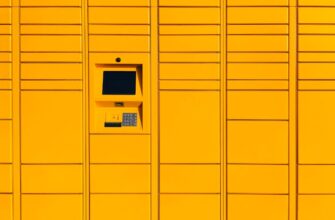Why Safely Storing Funds is Non-Negotiable
In today’s digital age, protecting your money isn’t just wise—it’s essential. Financial threats like hacking, inflation, and bank failures can erode your hard-earned savings overnight. This tutorial demystifies fund security, teaching you practical methods to shield your assets from both physical and digital risks. Whether you’re safeguarding emergency cash or long-term investments, mastering these techniques brings peace of mind and financial resilience.
Top Methods for Secure Fund Storage
Different goals require different solutions. Here are the most reliable ways to store funds securely:
- FDIC/NCUA-Insured Accounts: Banks/credit unions protect up to $250,000 per account type
- Government Bonds: Ultra-low-risk options like U.S. Treasury securities
- Money Market Accounts: Higher interest with check-writing privileges
- Hardware Wallets: Offline storage for cryptocurrency (e.g., Ledger, Trezor)
- Diversified Brokerage Accounts: For investments with SIPC protection
- Physical Cash Safes: Fireproof/waterproof boxes for emergency funds only
Step-by-Step Tutorial: Lock Down Your Funds
Follow this actionable 6-step process to secure your money today:
- Audit Existing Holdings: List all accounts, balances, and current security measures
- Prioritize Insurance Coverage: Ensure deposits fall under FDIC/NCUA limits; split large sums across institutions
- Strengthen Digital Defenses:
- Enable two-factor authentication on all financial accounts
- Use password managers with 16+ character unique passwords
- Freeze credit reports via AnnualCreditReport.com
- Implement Physical Protections:
- Store documents in fireproof safes
- Never keep large cash amounts at home
- Shred sensitive paperwork monthly
- Automate Monitoring: Set up transaction alerts and credit monitoring services
- Schedule Quarterly Reviews: Check statements, update beneficiaries, and reassess risks
Proactive Safety Maintenance Checklist
Ongoing vigilance prevents 90% of financial threats. Adopt these habits:
- Verify institution legitimacy via FDIC BankFind or NCUA databases
- Never share PINs/OTPs—legitimate institutions won’t ask for them
- Use VPNs on public Wi-Fi when accessing accounts
- Diversify storage across 2-3 insured entities
- Update device OS/antivirus software bi-weekly
- Store crypto seed phrases offline on steel plates
FAQ: Your Fund Safety Questions Answered
Q: What’s the absolute safest place for emergency cash?
A: FDIC-insured high-yield savings accounts. Avoid storing >$1,000 physically due to theft/ disaster risks.
Q: Are neobanks like Chime or Revolut safe?
A: Only if partnered with FDIC-insured banks (check their websites). Never exceed $250,000 per depositor.
Q: How often should I change financial passwords?
A: Every 90 days is ideal, but immediate changes after data breaches are critical. Use password managers for complexity.
Q: Can I safely store crypto long-term?
A: Yes—via hardware wallets with offline seed storage. Avoid keeping crypto on exchanges.
Q: What red flags indicate my funds are compromised?
A: Unauthorized transactions, password reset emails you didn’t request, or sudden account lockouts. Contact institutions immediately.
By implementing this tutorial’s strategies, you transform from vulnerable to vigilant. Remember: Fund security isn’t a one-time task—it’s an ongoing practice. Start today by auditing one account, then build layers of protection over time. Your financial safety is worth every precaution.








